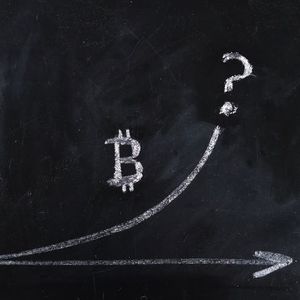Bitcoin And The Paradox Of Overvaluation
11 min read
Summary The difference between Bitcoin’s actual price and the price that the majority of market participants think that it should be is explained by something I call the paradox of overvaluation. This dynamic is more extreme for Bitcoin than other assets. Bitcoin’s price can remain high as long as the optimistic fringe continues to buy and hold. To succeed as an investor, you must understand the paradox of overvaluation and implement appropriate strategies. Traditional value investing is less effective in today’s markets. For over 15 years, the price of Bitcoin ( BTC-USD ) has continued to rise despite the fact that the majority of people believe that the cryptocurrency is severely overvalued. This difference between what the majority of people think should be the value of Bitcoin and its actual price is a clear example of a phenomenon which I refer to as “the paradox of overvaluation.” In my previous article entitled “ The Paradox of Market Overvaluation ,” which I highly recommend that everybody read, I demonstrated in detail why it is that the average investor always believes that the S&P 500 is overvalued — regardless of whether its PE ratio is higher than 20 (as it is now) or less than 10 (as it was in the 1970s). In this article, I will explain how the “paradox of overvaluation” has consistently defied majority opinion for over 15 years. The Market is Not a Voting Machine Benjamin Graham famously said that the market was like a “voting machine.” This implies that prices reflect the opinion of the majority of market participants. The Efficient Market Hypothesis [EMH] is also commonly interpreted to suggest that the market is a kind of aggregator of the opinions of all market participants. Based on these and other popular theories, most people seem to believe (or intuit) that the market price should reflect the average, weighted average or consensus opinion of market participants. These beliefs and intuitions are wrong. As I explain in great detail in this video entitled, “ The Stock Market is Not A Voting Machine ,” the stock market is not a voting machine nor an aggregator of market opinions. The market is a double auction mechanism. And in this specific type of auction, the shares of stock that are offered by sellers are always awarded to the highest bidder. Therefore, the market price reflects valuation of the highest bidder (the marginal buyer). The Market Price Always Reflects Extreme Optimism Now, at this point we should pause and reflect on what sort of opinion is implicitly reflected by the valuation that was paid by the highest bidder. We know one very important thing about this implicit opinion: That is extremely optimistic relative to the opinions of the majority of market participants. Now, some may ask: How do you know this? We know this since the shares of common stock of any given company are generally owned by a very small percentage of all market participants (generally less than 1%). It follows, therefore, that the valuation paid by the highest bidder (the marginal buyer) reflects the opinion of an extreme optimistic fringe among market participants. Now some may want to question my claim that the valuation paid by the highest bidder actually represents an extremely optimistic opinion (relative to all other market participants) about the value of the shares. Some might say, “some buyers such as momentum traders or passive index funds don’t care about valuation at all.” This is true. But the price still implicitly reflects the opinion of an optimistic fringe. Why? Because in order to buy the shares, the value-insensitive trader had to outbid a value-sensitive trader that did have an extremely optimistic opinion (relative to all other market participants) regarding the value of those shares. Therefore, it is accurate to say that the market price (the price paid by the highest bidder) represents an extremely optimistic relative opinion regarding the value of those shares. Indeed, it is accurate to say that the market price reflects the opinion of an “optimistic fringe” among all market participants. This is the essence of what I call “the paradox of overvaluation.” The market price of the shares of every company that trades on the stock market always seems to be overvalued in the eyes of the majority of market participants. This is not is not speculation or conjecture. This is an iron law of microeconomics and it is as true as any scientific law. Indeed, this is a truth that is so certain that it does not need to be proved empirically, because it is true by virtue of logical necessity. The Paradox of Overvaluation Applied to Bitcoin By virtue of the principles that we have just outlined, we can say with complete confidence that the valuation paid by the highest bidder (including any value insensitive trader) implicitly reflects an extremely optimistic opinion regarding the valuation of the shares. The same exact principle applies to most other assets, and it definitely applies to Bitcoin. The price of Bitcoin has always and will always reflect the opinion of an “optimistic fringe” of market participants. This insight is the key to understanding why it is that the price of Bitcoin has consistently defied the opinions of the majority of market participants for over 15 years. This basic principle – that the price of Bitcoin reflects the opinions of an “optimistic fringe” is as true today with Bitcoin near an all-time high, as it was in late 2022 when Bitcoin was in the midst of an excruciating bear market that saw its price cut by more than two-thirds. With Bitcoin near an all-time high today, most market participants think that Bitcoin is overvalued. But in 2022, the majority of market participants – potentially an even greater majority – thought that Bitcoin was overvalued. Once you understand this fundamental fact – that the price of Bitcoin will always reflect the opinions of an optimistic fringe – it will most likely revolutionize how you think about Bitcoin. Implications for the Price of Bitcoin When we say that the price of Bitcoin will always reflect the opinions of an optimistic fringe of market participants, this statement has more significance than when we say it regarding almost any other asset. This is because the optimistic fringe of market participants when it comes to Bitcoin is fanatical fringe, like no other group that participates in financial markets. Promoters of Bitcoin have managed to create an ideology of HODLing which is conducive to fanaticism since it is not based on any sort of measurable economic fundamentals. It is an ideology which is based on unmeasurable and unquantifiable assertions. Any and all claims that are said to support Bitcoin’s value are fundamentally indeterminate and epistemically non-falsifiable. Bitcoin is not like a stock that can have a quarter in which their earnings are disappointing. Bitcoin has no earnings nor any basis for quantifiable fundamental value that can “disappoint” its followers. And as long as Bitcoin owners and potential buyers are satisfied with this state of affairs, then Bitcoin’s price can continue to remain extremely high relative to its intrinsic valuation as estimated by skeptics. The fact that Bitcoin has virtually no fundamental characteristics that can serve as reference points for value is very important. It enables Bitcoin fans to assign any value to Bitcoin that they want. With stocks, price cannot exceed earnings by a multiple that is too high. With Bitcoin, there is no earnings and no equivalent that can serve as a constraint on the value that is assigned to it by the optimistic fringe – to the upside or the downside. The Outlook for Bitcoin The bullish case for Bitcoin is that more and more people and/or institutions will “adopt” BTC as a currency and/or as a sort of “digital gold”. Given that its supply is fixed at a maximum of 21 million bitcoins, adding adopters will tend to drive up the price. This is because new adopters have to bid high enough to entice current Bitcoin holders to part with their BTC. The bearish case for Bitcoin is that some event will happen, that will cause the optimistic fringe of Bitcoin owners to change their minds about their value and lower their reservation prices. A reservation price is the lowest price that a holder of an asset is willing to sell at. There is a third possible scenario: This would be a situation in which Bitcoin trades sideways. This could occur if two things occur simultaneously. First, the ability of the Bitcoin narrative to attract significant amounts of new investment from marginal buyers has “peaked.” Second, relatively few current holders will change their minds about the value of Bitcoin and decide to sell. In my view, contrary to what bulls and bears think, the “sideways” is quite plausible given that most of the arguments for and against Bitcoin have been completely aired out and it is relatively unlikely that there will be any material new developments that can add substantially to the bullish or the bearish narratives that might influence the optimistic fringe. Again, it is important to understand in this regard that Bitcoin is not like a stock where earnings or dividends can rise or fall, providing fresh new reasons for the optimistic fringe to change their assessments of valuation. With Bitcoin, bulls and bears could be rehashing the same exact arguments for years, with no major new developments to bolster the arguments of one side or another. Conclusion Most observers of financial markets expect that the market price of an asset will reflect the opinion of the majority of market participants. This expectation is false. Assets are always held by the market participants that value them most highly. This basic insight is especially consequential in the case of Bitcoin. This is because the market participants that value Bitcoin most highly constitute a fanatically optimistic fringe of opinion that is like no other in financial markets. As a result, the valuation of Bitcoin is far higher than the valuation estimated by the average market participant. This is a good example of what I call the “overvaluation paradox.” The market price is always higher than the majority of market participants think it should be. However, in the case of Bitcoin, this divergence between the market price and what the majority thinks the market price should be is particularly extreme. This has a clear explanation. The price of an asset in limited supply always reflects the opinions regarding the value of that asset of an optimistic fringe of market participants. In the case of Bitcoin, opinions on the value of this asset are far more polarized than with almost any other asset. The optimistic fringe regarding the value of Bitcoin thinks that Bitcoin should be worth multiple times more than its current price. Bitcoin skeptics believe that BTC has zero or near-zero value. This wide divergence is enabled by the fact that the optimistic fringe of Bitcoin fans has not anchored their valuations of Bitcoin to any serious quantifiable thesis. The value of Bitcoin could be $1,000 or $1,000,000 and there is very little that can economically arbitrate between these alternatives. Therefore, the value of Bitcoin becomes a matter of subjective opinion that is almost completely unhinged from any quantifiable fundamental argument that could justify it. Due to the limited supply of Bitcoin, as long as an optimistic fringe of market participants is willing to buy and hold Bitcoin at high values (e.g. more than $100,00) and to do so indefinitely, then the value of Bitcoin will remain high – even if the vast majority of people in the world think that market value of Bitcoin is ridiculous. I personally believe that Bitcoin is intrinsically worth virtually nothing. I don’t believe it will ever be adopted widely as money. And I don’t believe that it will be a reliable long-term store of purchasing power (as gold has been for thousands of years). Most importantly, I believe that any valuable economic services that Bitcoin provides can be provided with equal or greater efficiency by substitutes. However, I also understand this very clearly: My opinion about the fundamental value of Bitcoin does not ultimately matter. The only opinions that matter are those of the small minority of people that are willing to trade and hold those 21 million Bitcoins. As long as those people believe that Bitcoin is worth $100,000 or more, then its market price will continue to trade above $100,000. A key takeaway is that there is absolutely no contradiction when I say that Bitcoin is worth virtually nothing in terms of fundamental economic value and when I say that Bitcoin’s price can and probably will go higher. I base the former opinion on my knowledge of economic fundamentals. I base the latter opinion on my observation of the psychological and social dynamics that motivate the optimistic fringe of market participants in relation to Bitcoin. I think it is useful to think of the psychological and social dynamics that motivate the growth in Bitcoin adoption (which drives the growth of its price) the way one would objectively evaluate the prospects for the spread of a religion. For example. You might vehemently disagree with the fundamentals of a certain proselytist religion – let’s say Mormonism. But it is possible to objectively understand the psychological and social dynamics that have caused this religion to grow throughout the world. Every new convert to the “cult of Bitcoin” becomes a new source of marginal demand. Every convert is a new bidder at the auction that is motivated to buy regardless of price. It makes absolutely no difference if the majority think that the price that the new convert pays for Bitcoin makes any economic sense. The reality is that if a new convert wants to own some Bitcoin, they have to bid high enough to cause another fanatical Bitcoin optimist to part with their Bitcoin. Once you have understood Bitcoin in this way, you will comprehend that your superior understanding of the economic fundamentals of this asset can cause you to lose a great deal of money. To understand what the price of Bitcoin might do, you need to understand the principles of price formation. Final Thoughts If you want to succeed as an investor, it is critical that you understand the “paradox of overvaluation,” and that you acquire training in the the microeconomic principles that explain it. We no longer live in the world where value investors such as Ben Graham and Warren Buffet made their fortunes. For over a century, investors could find many US stocks that were intrinsically undervalued or at fair value. In such an environment, the strategy of “buy and hold,” can work well. The problem is that we now live in a world in which almost everything is intrinsically overvalued and there will only sporadically be opportunities to buy stocks in the US (and elsewhere in the world) at prices that will enable a good return, on a risk-adjusted basis. This means that portfolio management needs to be done very differently than it was until just a few years ago. At Successful Portfolio Strategy , we manage our portfolio with a philosophy of exploiting rare opportunities (e.g. macro-driven market crashes) and greatly expanding the scope of our search for good investment opportunities. In this regard, we think that 2025 is going to provide investors with some very good, but relatively unconventional opportunities. Short and long volatility strategies, international stocks, TIPS and combination trades are just a few examples of the sorts of things we have worked with in our portfolios in 2025.

Source: Seeking Alpha



